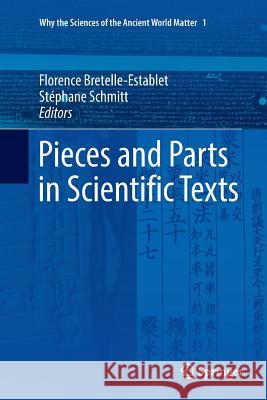Pieces and Parts in Scientific Texts » książka
topmenu
Pieces and Parts in Scientific Texts
ISBN-13: 9783030087050 / Angielski / Miękka / 2019 / 355 str.
Kategorie:
Kategorie BISAC:
Wydawca:
Springer
Seria wydawnicza:
Język:
Angielski
ISBN-13:
9783030087050
Rok wydania:
2019
Wydanie:
Softcover Repri
Numer serii:
000850247
Ilość stron:
355
Waga:
0.50 kg
Wymiary:
23.39 x 15.6 x 1.91
Oprawa:
Miękka
Wolumenów:
01











